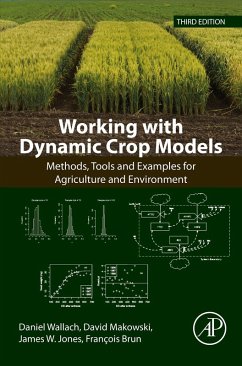Working with Dynamic Crop Models: Methods, Tools and Examples for Agriculture and Environment, 3e, is a complete guide to working with dynamic system models, with emphasis on models in agronomy and environmental science. The introductory section presents the foundational information for the book including the basics of system models, simulation, the R programming language, and the statistical notions necessary for working with system models. The most important methods of working with dynamic system models, namely uncertainty and sensitivity analysis, model calibration (frequentist and Bayesian), model evaluation, and data assimilation are all treated in detail, in individual chapters. New chapters cover the use of multi-model ensembles, the creation of metamodels that emulate the more complex dynamic system models, the combination of genetic and environmental information in gene-based crop models, and the use of dynamic system models to aid in sampling. The book emphasizes both understanding and practical implementation of the methods that are covered. Each chapter simply and clearly explains the underlying principles and assumptions of each method that is presented, with numerous examples and illustrations. R code for applying the methods is given throughout. This code is designed so that it can be adapted relatively easily to new problems. - An expanded introductory section presents the basics of dynamic system modeling, with numerous examples from multiple fields, plus chapters on numerical simulation, statistics for modelers, and the R language - Covers in detail the basic methods: uncertainty and sensitivity analysis, model calibration (both frequentist and Bayesian), model evaluation, and data assimilation - Every method chapter has numerous examples of applications based on real problems, as well as detailed instructions for applying the methods to new problems using R - Each chapter has multiple exercises for self-testing or for classroom use - An R package with much of the code from the book can be freely downloaded from the CRAN package repository
Dieser Download kann aus rechtlichen Gründen nur mit Rechnungsadresse in A, B, BG, CY, CZ, D, DK, EW, E, FIN, F, GR, HR, H, IRL, I, LT, L, LR, M, NL, PL, P, R, S, SLO, SK ausgeliefert werden.









